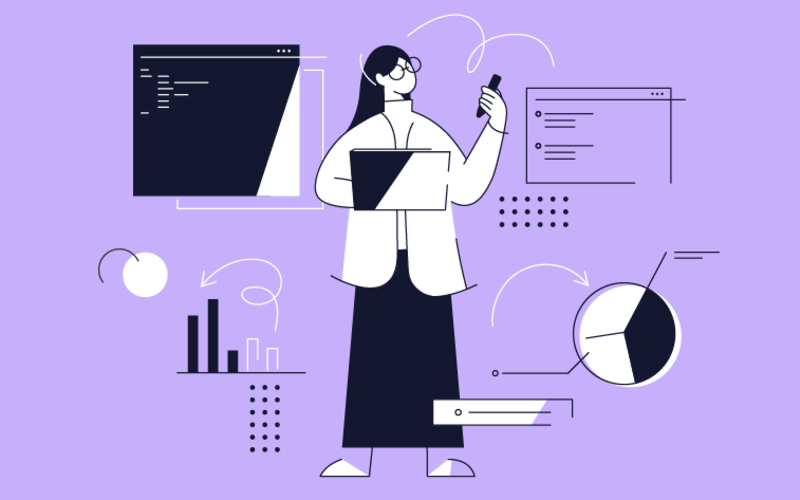Svea Solar, the Swedish solar panel provider, and cleantech company has been around since 2015. Coming from a humble start of installing solar panels in Sweden only, today they are an energy-as-a-service company that operates in five countries and works on exciting, cutting-edge technologies that will revolutionize the way private consumers use, sell and resell energy.
The company is currently in hypergrowth – by 2025, they plan on ‘cleaning up’ all of Europe and having way more employees too. They teamed up with Proxify to find dedicated expert developers and grow their software team in mere days. We talked to their Head of Software Department, Erik Tilleby, about their current projects, hiring plans, and their experience with operating hybrid teams of in-house developers and remote freelancers.
Tell us in your own words what Svea Solar is working on, in terms of software.
The software department of Svea Solar currently works on five different projects.
The first one is the website, which is basically the window to potential customers and hence is very important to us. Then we have the app, which is more scaled towards use by our existing customers. If you have a solar panel installation on your roof, through the app you can get insights into how the installation works, how much energy you are consuming, and if you have more energy production on your roof than you are consuming, so you can sell that surplus into the grid and get paid back for it. You can also follow all the spending and saving statistics through the app.
We also have the backend, which caters to the app and the site, so it’s an integration towards our CRM system. Every solar panel that we have installed feeds information into it, so our users can follow all the imports from the app.
Most excitingly, at the moment we are starting up two new projects that are also changing us as a company. We are converting from being a hardware installer into being basically energy-as-a-service. These two projects are merged into what we call the Virtual powerplant – one side of it is focused on energy optimization, and the other on customer aggregation.
Energy optimization is more of a smart home feature that helps us support our customers in consuming energy when it’s cheap, and staying away from consumption when it’s pricey. That can be anything from controlling an EV charger to scheduling the charging cycles so you get as low a cost as possible for that charging. Customer aggregation is more related to how our customers sell their energy back to the grid. So this is about aggregating customers in groups and being able to sell energy back to the grid in different ways.
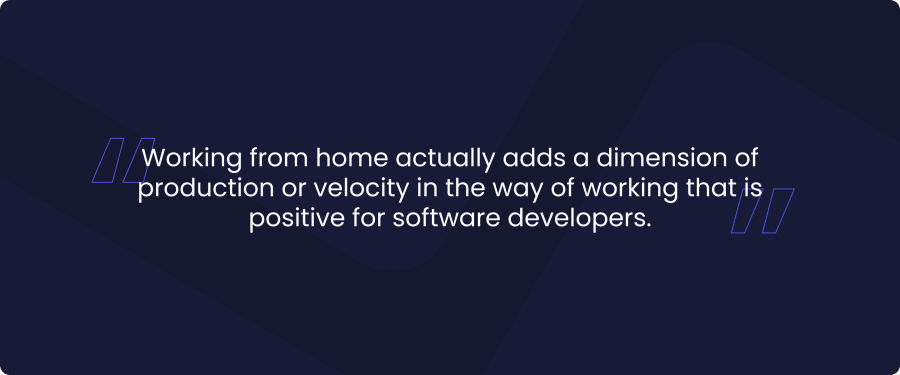
A company that provides sustainable energy and digitalizes the process of installation, distribution, and calculation of households’ needs for electricity sounds like an amazing workplace on the forefront of battling one of today’s greatest challenges – climate change and depletion of resources. However, in terms of sourcing developers, it is probably a niche industry that cannot quickly staff and onboard employees. How do you manage to overcome this challenge?
Of course, there is always a challenge to find good people, and looking at the market nowadays to hire the right people is generally really difficult. We have recruitment specialists that support our teams, and it’s not like when you start you need to be a renewable energy geek to work in Svea Solar. You can also learn in the coming period after being hired.
There is a learning curve for anyone joining. Instead of being a web-based developer, as an employee, you’d have to be more Internet-of-Things-focused.
The techniques we are using are fairly standard, it’s not like we are inventing something new. But we are inventing new ways to implement those techniques into the hardware that we connected to the solar panel installations in people’s homes.
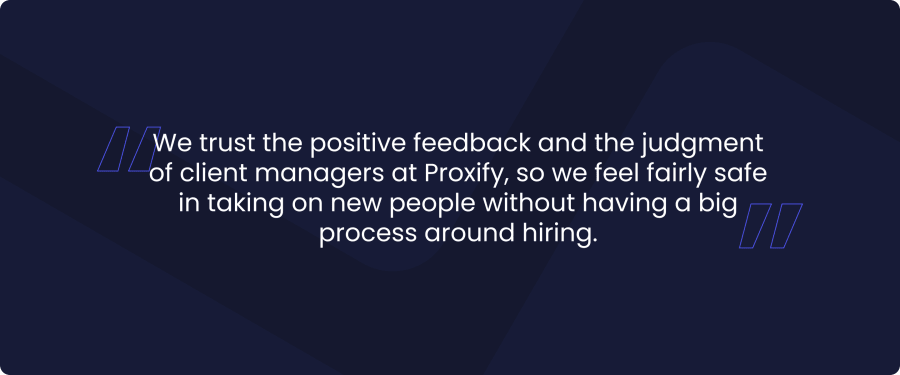
You operate in five different countries, with teams that work together on creating unique solutions for distribution and sustainable and affordable use of electricity. How are you managing the collaboration and team culture between remote workers and in-house employees in five different locations?
Truthfully speaking, there is always a dimension that you lose when you don’t meet people in person. But there is always a way around it to be able to mitigate what you lose, and that is through communication. We have a remote optional setting for our Swedish full-time employees as well. I’m not working from the office every day, and most of the colleagues within the software team at Svea Solar also aren’t.
I think with Covid-19 people basically learned how to work remotely in a good way. That has had a really big impact, especially on software development. I think working from home actually adds a dimension of production or velocity in the way of working that is positive for software developers. It doesn’t work for everyone, of course, but for those it does, it can be beneficial.
How many remote developers are you working with currently? Would you say that the experience of working with Proxify developers until now was underwhelming, as you expected, or it exceeded your expectations?
We don’t build teams of just contractors, it’s mixed up 50-50 – for every full-time employee we have one contractor. As we grow, we will add more contractors. The plan is to have 52 employees in software by the end of this year, which means we will have 26 contractors. That is the plan or aim of anyone. From Proxify, we currently have 16 developers.
The process of hiring a contractor, naturally, doesn’t really work the same way as with hiring a full-time employee. There are upsides and downsides to contracting, and we have opted for being open to taking on new contractors if they fill the competence.
We trust the positive feedback and the judgment of client managers at Proxify, so we feel fairly safe in taking on new people without having a big process around hiring. We have had some contractors that didn’t meet demands, but we were immediately able to move on and find someone else that did. Generally, they are all super professional and really competent, so we are really pleased with the service we have gotten from Proxify.
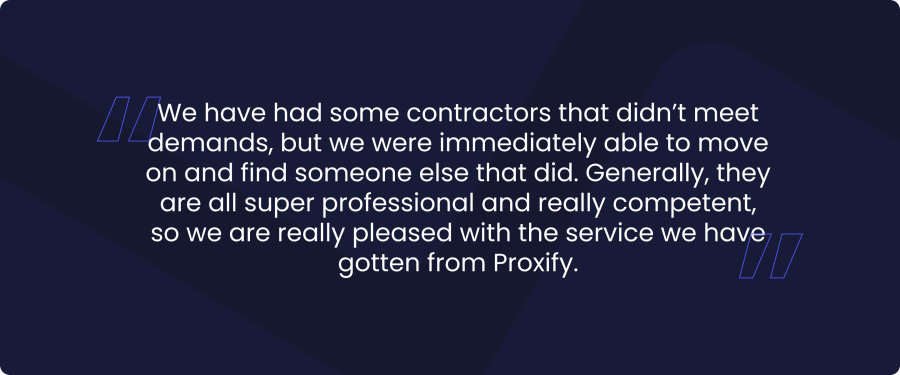
Our developers that work with Svea Solar are more than content with the way they fit into the team, so much so they feel like they are part of the teams that work in-office. How do you manage to help them fit into the team culture so easily? What would your advice for hybrid teams be, in terms of overcoming the lack of communication and unified team culture?
We don’t divide the Proxify developers from the full-time employees, everyone is the same. Everyone has a say and anyone can criticize, anyone can be positive, and come up with their own ideas and we’re open to discussion.
I think just having that mindset when you work with contractors is the best way to make people feel included. It’s not like the words of the full-time employee weigh heavier than those of the developers. We don’t make any separation in day-to-day working and decisions. If you were to go to one of our daily stand-up meetings, you wouldn’t notice who is a contractor, developer, and who is a full-time employee, and that’s the way it’s supposed to be. The key is there.
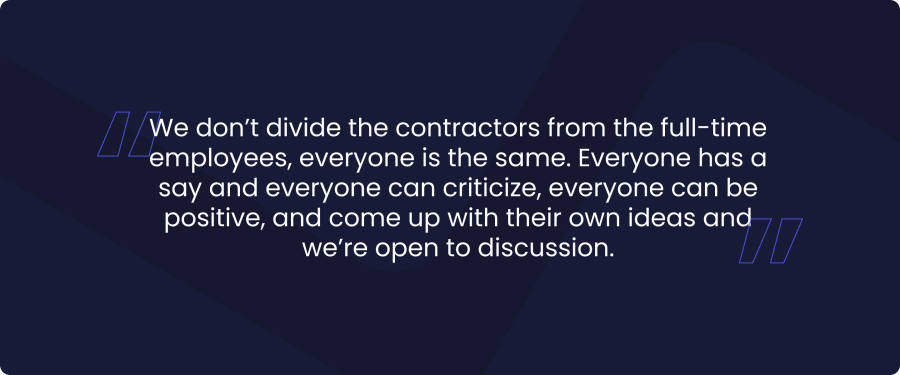
What project that Svea Solar developed (or is currently working on) would you say you’re most proud of?
That is a hard question to answer. It’s not like the site and the app, the backend, and the virtual powerplant are different projects because everything is intertwined and connected. I would say it’s our team and all the products that we are building. I’m proud of everyone that I work with, and everything we are delivering.
Why should developers consider working in the cleantech industry?
In a sense, people work differently and think differently. But, take a step back and look at what’s happening with energy generally, not only in Europe but in the world. This is one of the most important industries in the world right now.
To be able to be a part of that and to also create a new way of distributing clean energy into the grid, is pulling your weight in basically saving the world. That is our goal and our objective as a company, to basically save the world. What can you say to that? You need to be a part of that, right?
And then, looking at the other end, we are working with exciting new projects and technologies, and in this company, you would be able to both grow as a person and to learn new technologies and techniques, so I think that’s exciting in itself.




